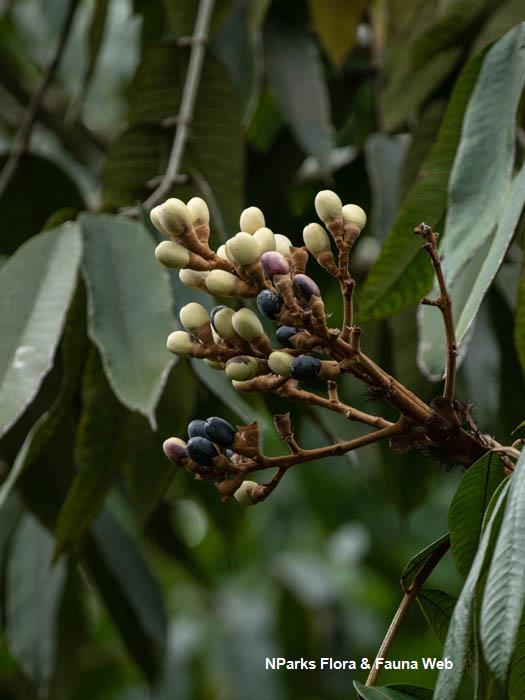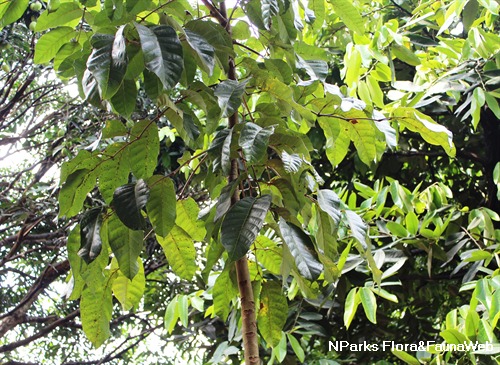
Back
Canarium ovatum Engl.
| Family Name: | Burseraceae |
| Synonyms: | Canarium pachyphyllum G.Perkins, Canarium melioides Elmer |
| Common Name: | Pilinut, Pili |
Name
Classifications and Characteristics
| Plant Division | Angiosperms (Flowering Seed Plants) |
|---|---|
| Plant Growth Form | Tree (Medium (16m-30m)) |
| Lifespan (in Singapore) | Perennial |
Biogeography
| Native Distribution | Philippines |
|---|---|
| Native Habitat | Terrestrial |
| Preferred Climate Zone | Tropical |
Description and Ethnobotany
| Growth Form | A tree up to 25 m tall and 50 cm in diameter. |
|---|---|
| Foliage | Leaves have a spiral arrangement, stipules persistent. Leaflets are ovate to elliptic, with a pointed tip. |
| Flowers | Flowers are greenish-yellow, borne in clusters in the leaf axils of young shoots. |
| Fruit | Fruits are ovoid to ellipsoid, up to 7 cm long and 3.8 cm wide. Fruits turn to purplish-black when fully ripe. There is one seed in each fruit. |
| Habitat | Primary and secondary forests up to 400 m altitude. |
| Cultivation | Trees do well in deep, fertile, well drained soils. |
| Ethnobotanical Uses | Edible Plant Parts : Edible Fruits Food (Fruit or Vegetable): The pulp is eaten boiled and seasoned; the kernels are eaten roasted. The oil extracted from the fruit is used in cooking. Others: The hard shell of fruits are used as fuel for cooking. The wood, rich in resin, used as firewood. |
Landscaping Features
| Desirable Plant Features | Ornamental Foliage |
|---|---|
| Landscape Uses | Parks & Gardens, Shade Providing Tree / Palm |
| Thematic Landscaping | Economic Garden |
Fauna, Pollination and Dispersal
| Pollination Method(s) | Biotic (Fauna) |
|---|
Plant Care and Propagation
| Light Preference | Full Sun |
|---|---|
| Water Preference | Lots of Water, Moderate Water |
| Plant Growth Rate | Moderate |
| Rootzone Tolerance | Well-Drained Soils |
| Diseases | No serious disease or pest issues. However, during the rainy periods, young seedlings are attached by anthracnose. Spraying fungicide solution can easily control the disease. |
| Propagation Method | Seed, Grafting |
Foliar
| Foliage Retention | Evergreen |
|---|---|
| Mature Foliage Colour(s) | Green |
Non - Foliar and Storage
| Trunk Type (Non Palm) | Woody |
|---|
Floral (Angiosperm)
| Flower & Plant Sexuality | Unisexual Flowers |
| Flower Colour(s) | Green - Light Green, Yellow / Golden |
|---|---|
| Flower Grouping | Cluster / Inflorescence |
Fruit, Seed and Spore
| Mature Fruit Colour(s) | Purple |
|---|---|
| Mature Seed Colour(s) | Brown |
Image Repository
Others
| Master ID | 29469 |
|---|---|
| Species ID | 3778 |
| Flora Disclaimer | The information in this website has been compiled from reliable sources, such as reference works on medicinal plants. It is not a substitute for medical advice or treatment and NParks does not purport to provide any medical advice. Readers should always consult his/her physician before using or consuming a plant for medicinal purposes. |

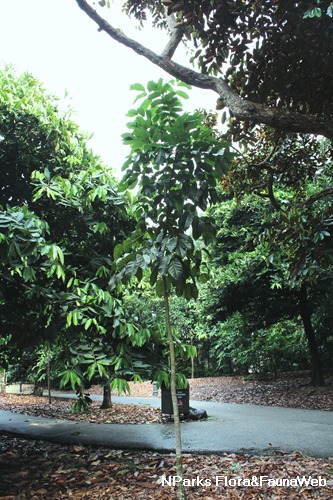
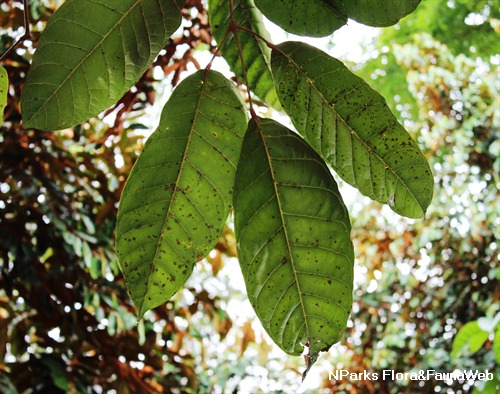
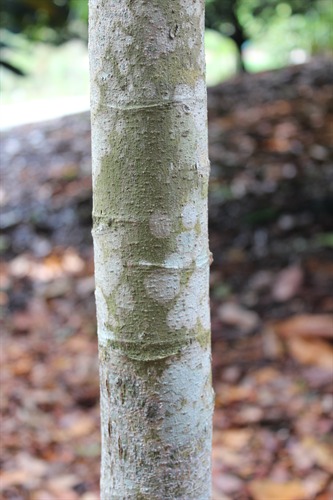
.jpg)
_lowres.jpg)
